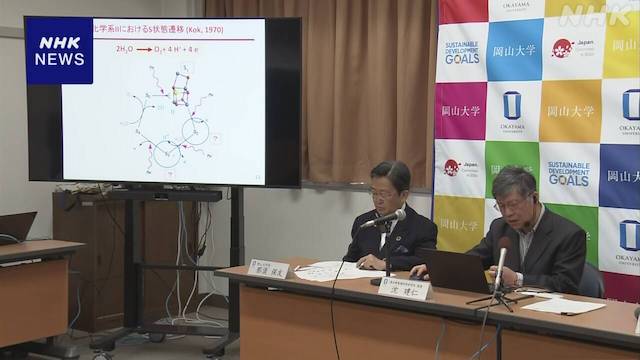Okayama, Feb 01 (News On Japan) - A research group, including scientists from Okayama University, has successfully captured part of the process by which oxygen molecules are produced from water molecules during photosynthesis using special X-rays. This breakthrough is expected to lead to a better understanding of the detailed mechanisms of photosynthesis and has potential applications in the research of "artificial photosynthesis," which is gaining attention as a clean energy source.

The findings were published by the research group led by Professor Jian-Ren Shen of Okayama University in the international scientific journal 'Nature'. It is known that during the reaction in photosynthesis where oxygen is produced from water, substances in which atoms like manganese are bonded in a shape reminiscent of a "distorted chair" act as a catalyst to incorporate water. The research group utilized special X-rays to observe the catalyst incorporating water molecules in an extremely short time frame, ranging from two hundred millionths to five thousandths of a second. As a result, they were able to capture in three dimensions the changes in the structure of the catalyst that began one microsecond after exposure to light, and how it gradually incorporates water molecules.
The development of "artificial photosynthesis," which uses sunlight to produce hydrogen and oxygen from water and carbon dioxide, is drawing global attention as a clean energy source. The research group expects that their results will contribute to the development of catalysts for artificial photosynthesis. Professor Shen commented, "It took five years to reach this point in our research. Now, we want to elucidate the mechanism by which oxygen is produced, which is the final step."
Source: NHK















